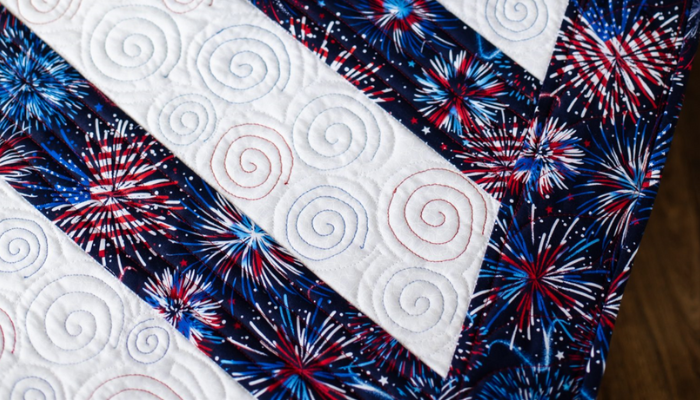
Main photo by Kelsey Wolfe Photography for Ampry Publishing. All other photos are provided by the designer.
I am a fan of negative space and include it frequently in quilts I design! The negative space acts as a blank canvas for creating free-motion quilting motifs that stand out since nothing competes with them in the negative space.
Think of negative space as the “supporting character” to the star roles of piecing or applique. Intricate patchwork and/or detailed applique tends to draw the eye first. The spaces around it can complement these areas with interesting motifs and designs all their own!
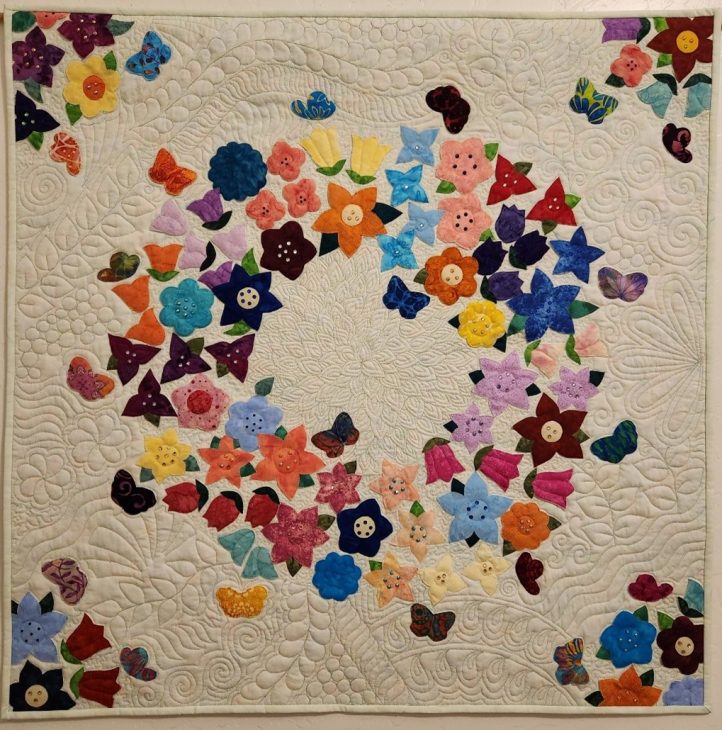
Intense quilting surrounds the floral applique in Fluttering Floral Fantasy.
What Is Negative Space?
Negative space includes all the open areas on a quilt that do not feature patchwork or applique designs. They may be large areas like borders or whole blocks, or smaller spaces like sashing, setting squares, and larger portions of a block that are not pieced.
Negative space can be any shape or size. It can separate printed fabric areas and patchwork, like the diagonal areas in this table runner.

Patriotic colored swirls complement the diagonal 4th of July fabric in a table runner.
Negative space could even make up the entire quilt if it is a whole cloth quilt! In this format, the quilting is the feature that transforms the fabric from plain to popping!

A whole cloth quilt is the ultimate negative space!
Why Quilt Negative Space?
With no competition from prints used in piecing or applique, the quilting in negative space can really stand out on its own.
Negative space is a good place to use hand quilting, ruler quilting techniques, free-motion quilting motifs and meandering fillers like stippling, swirls, pebbles, etc. since they will be much more visible and can enhance the appearance of the quilt.
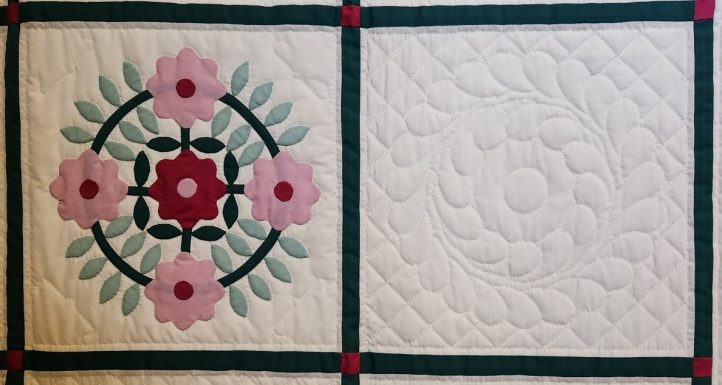
Hand quilting fills a negative space block within an applique album quilt.
The quilting in negative spaces helps draw the eye toward the “positive spaces” of pieced blocks and/or applique. Designs can be chosen to reinforce the positive space shapes or to complement them.
Building in Negative Space into the Quilt Top
Adding negative space to an existing quilt or block design can be done easily by adding borders to each block or alternating pieced blocks with blocks of a single fabric in the same size as the original block.
In the example below, some of the patchwork blocks are replaced with a single fabric, providing areas to quilt in any manner desired, knowing the stitching will show up better on a solid fabric than on detailed patchwork.
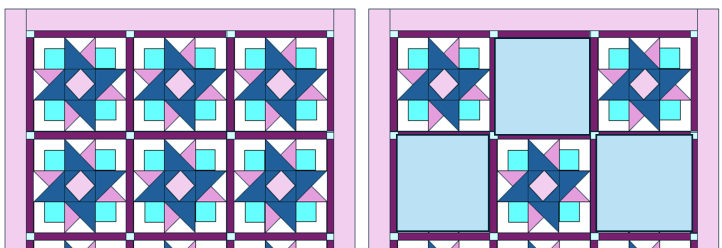
On left: Traditional arrangement of repeating blocks. On right: Alternating blocks are replaced with single fabrics for negative space quilting.
Choosing Fabrics for Negative Spaces
Negative space can be any color, though often white, cream and lighter shades of solid fabrics are used so the quilting on them shows up better. Subtle tone on tone, monochromatic, ombre and tiny dot prints work well too for the visibility of the quilting. Stitches sometimes can be swallowed by dark fabrics, so contrast thread may be a good choice for quilting darker negative spaces.
Sometimes, a quilt evolves to showcase a beautiful fabric in negative spaces rather than cutting it up to use in pieced patchwork. The quilt Arizona Canyons, below, uses a beautiful fabric in canyon colors as the main fabric in each square, with intense free-motion quilting filling each square.
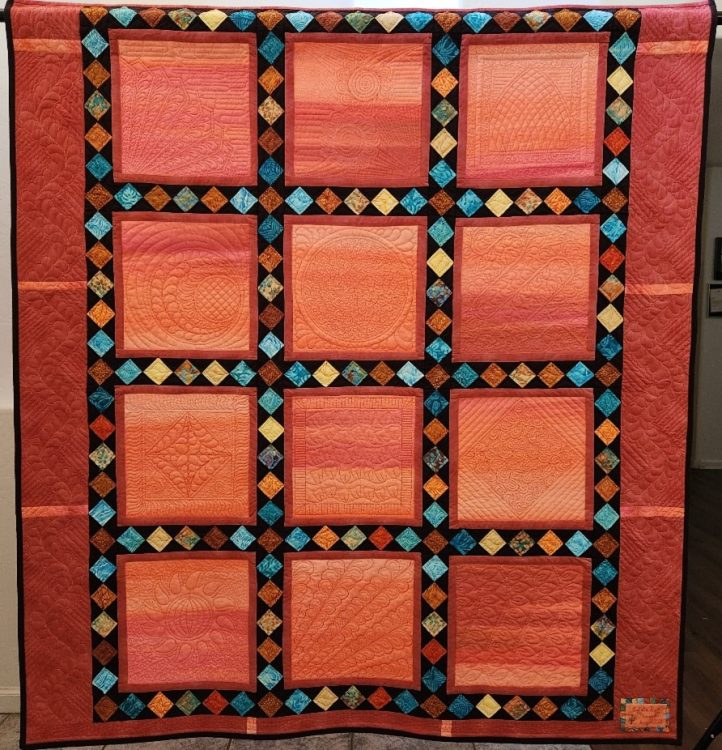
A beautiful red rock fabric is showcased in Arizona Canyons.

Each square contains a different negative space quilting design.
Doing intense free-motion work on a busy print is usually not optimal as the stitching gets lost in the print, as in the tropical fabrics below. But it can be a great canvas to practice on and develop free-motion quilting skills!
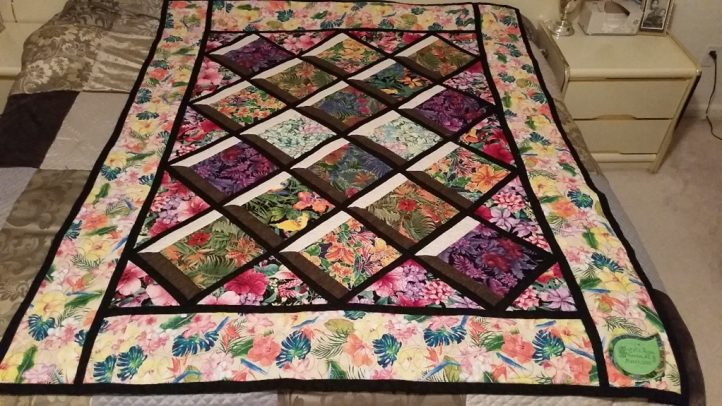
Tropical flower fabrics form negative spaces in attic window blocks.

Stitching on a busy background can be a low-stress way to develop free-motion skills.
Designs and Techniques for Negative Space Quilting
The motifs, machine set-up and stitching techniques used are determined by the fabric and size of the negative space area.
Free-motion stitching allows for continuous quilting lines made up of curves, swirls, pebbles, stippling and other curved motifs.
To set up your sewing machine, use a free-motion foot, drop or cover the machine’s feed dogs and move the quilt in the directions desired to create the motif. Practice makes progress with this skill!
In the quilt “Hawaii Beauty”, based on the New York Beauty block, some solid blocks were included as negative spaces for free-motion work.

Hawaii Beauty, based on the New York Beauty block, has negative space built into the top.
The four corners within the border provide printed negative space.
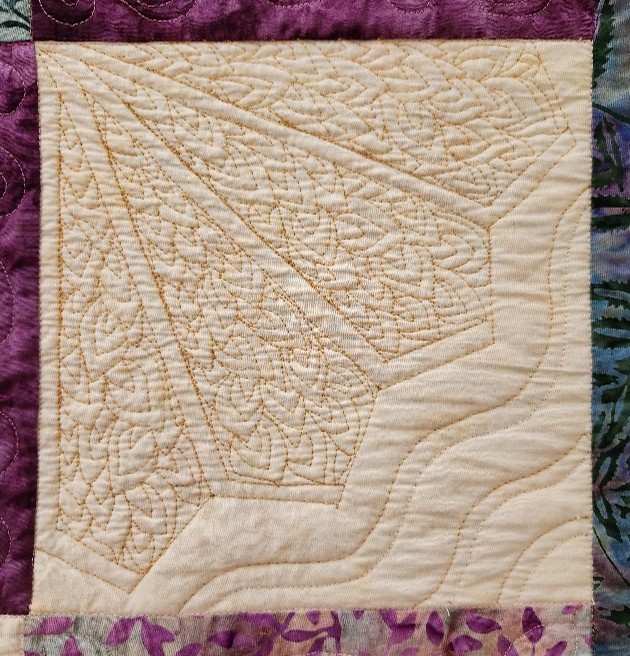
Solid blocks provide areas for negative space quilting in Hawaii Beauty.
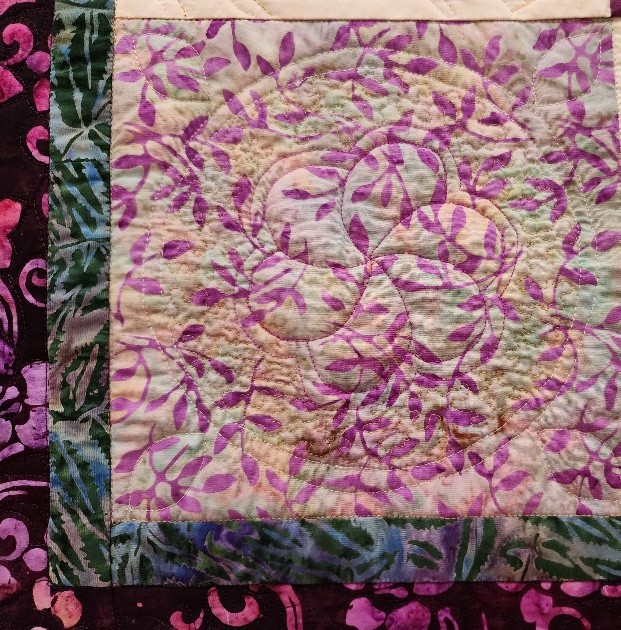
Floral motifs in the corner printed blocks are a little more difficult to see.
Using a walking foot and stitching parallel lines, diagonal lines or cross-hatching can be an effective way to quilt busy printed negative space.
The rows of lines catch and reflect the light, allowing the stitching to be seen better than an intricate quilting pattern would be.
The walking foot provides additional stability when stitching.

Parallel lines may show up best on printed fabrics.
Negative Spaces Provide Freedom for Quilting Creatively
Beautiful, intricate patchwork or applique are always focal points for a quilt, a tribute to the skill, patience and perseverance of the quiltmaker who stitched them together so wonderfully! Negative space quilting can enhance the piecing by filling in design areas like in the sections of the mariner’s compass quilt, “The Compass Points Southwest”, below.

Tone on tone subtle prints provide negative spaces in the compass points, filled with free-motion quilting motifs.
Negative space can also frame the pieced design and help draw the viewer’s eye to it, as the larger corner triangles in the compass quilt demonstrate.
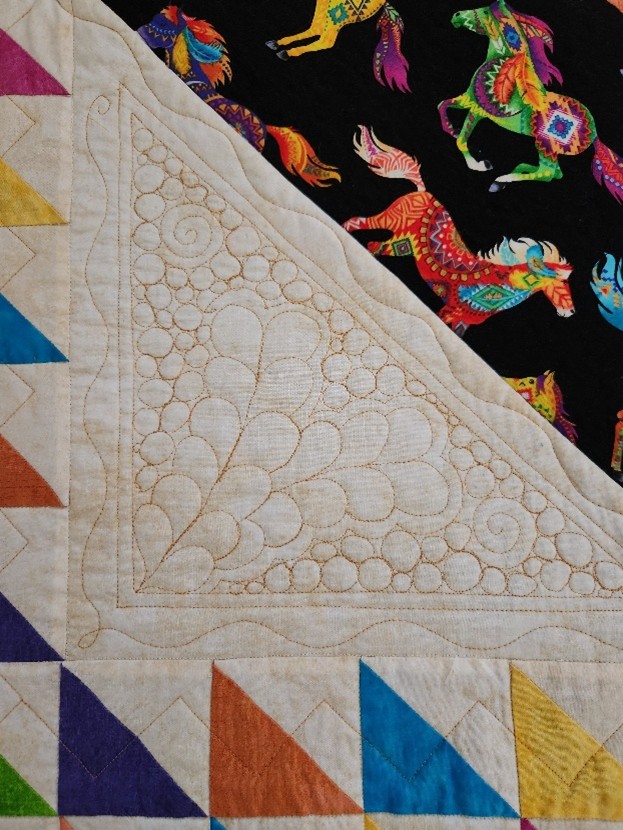
Negative space triangles frame the horses galloping past the central mariner’s compass.
Embrace the Positives of Negative Space!
Negative space in a quilt provides balance to the design by relieving the intricacy of piecing or applique while simultaneously shining in its own right!
As a canvas for free-motion quilting or geometric lines stitched using a walking foot, negative space quilting adds new dimensions to the finished quilt that enhance its unique beauty!
Enjoy exploring the possibilities of negative space in your future quilt creations!
